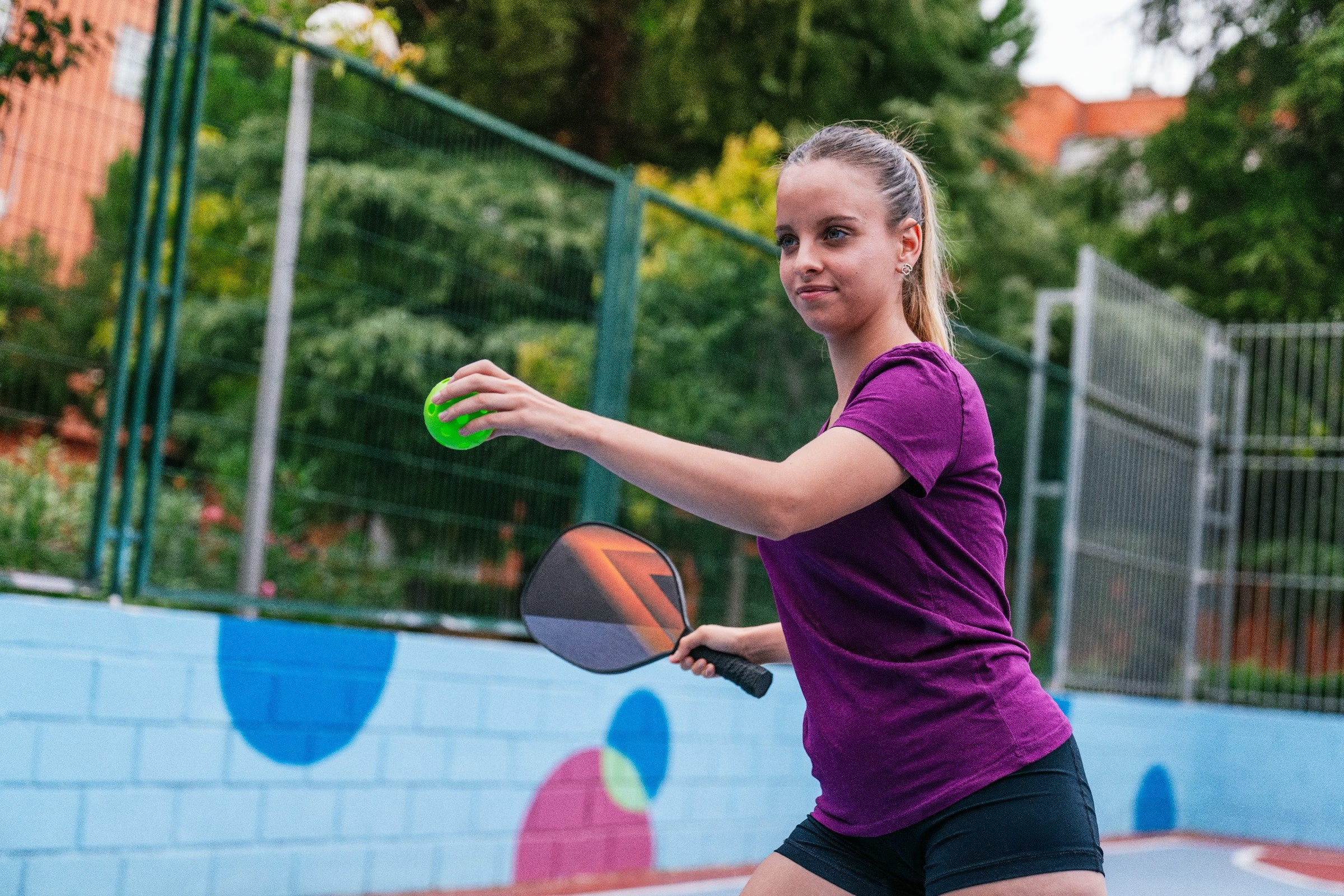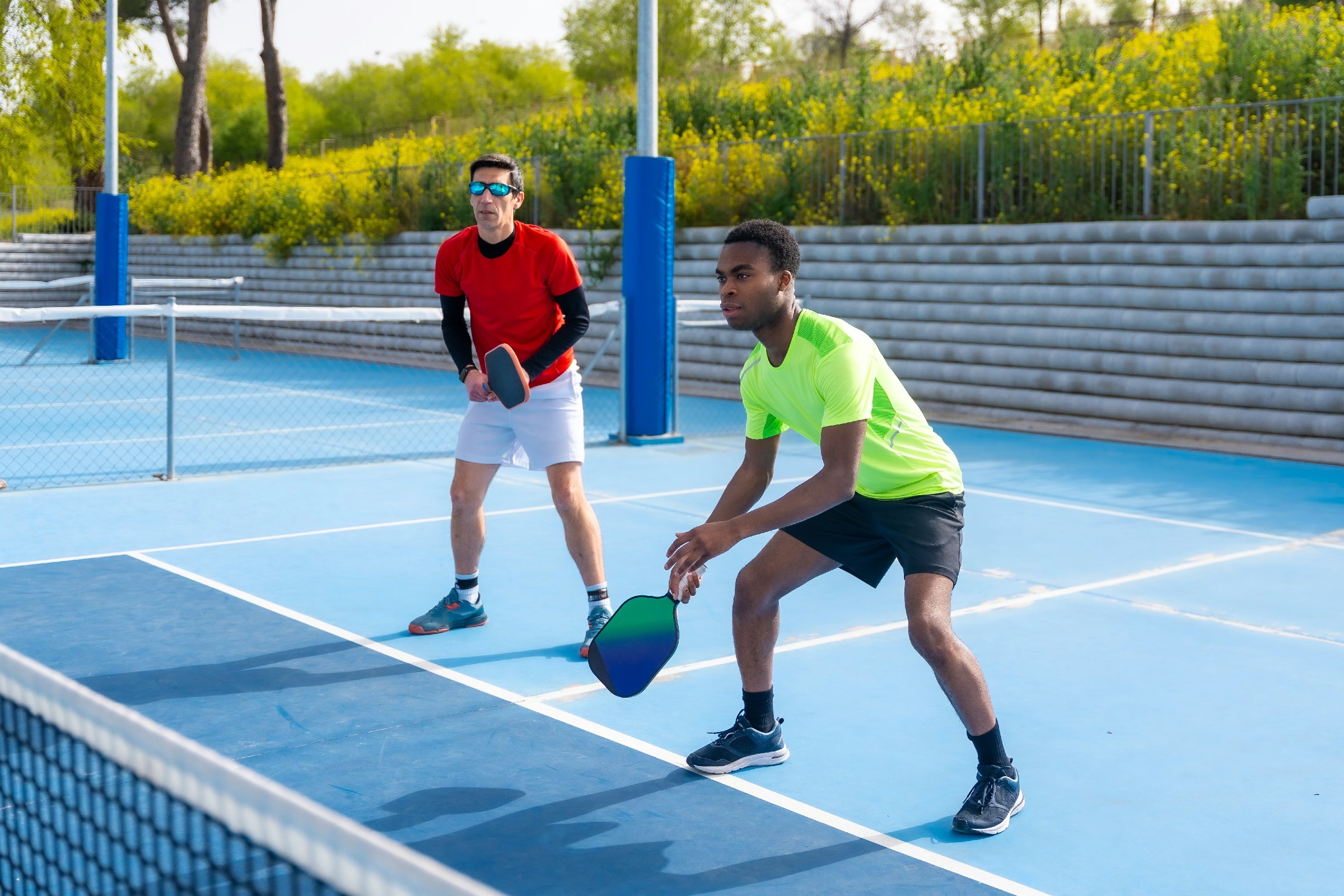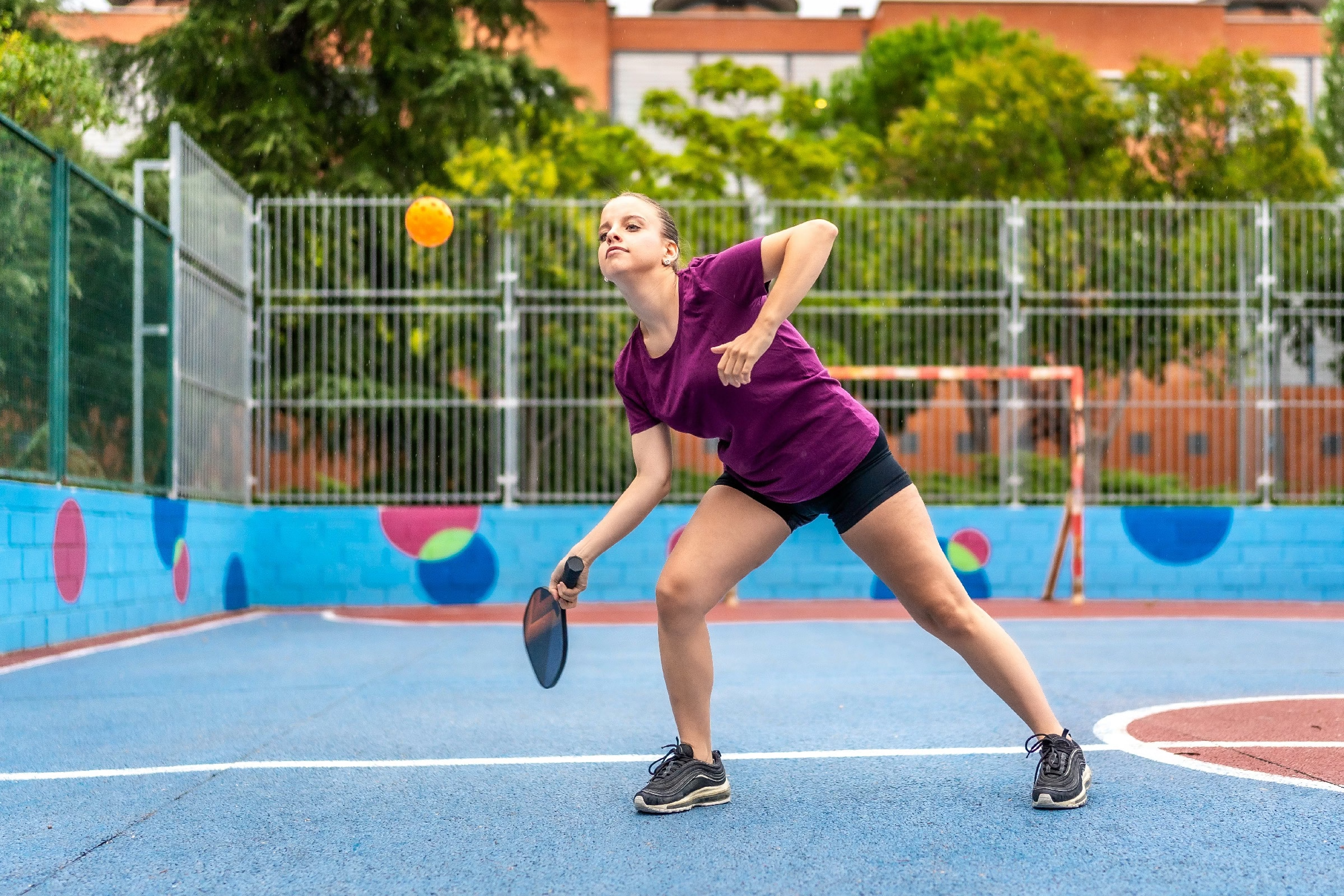Blog
what is the difference between indoor and outdoor pickleballs

Pickleball, a sport that has rapidly gained popularity across the globe, combines elements of tennis, badminton, and ping-pong, captivating players of all ages. As enthusiasts dive into this dynamic game, a crucial question arises: what is the difference between indoor and outdoor pickleballs? While they may seem similar at a glance, these two varieties possess distinct characteristics tailored to their respective environments.Understanding these differences not only enhances gameplay but also ensures that players can choose the right equipment for their preferred setting. In this article,we will explore the unique features of indoor and outdoor pickleballs,shedding light on their construction,design,and performance to help you elevate your game,whether on the smooth surface of an indoor court or amidst the fresh air of the great outdoors.
Table of Contents
- Understanding the Basics of Indoor and Outdoor Pickleballs
- Materials Matter: The Composition of Indoor vs. Outdoor Pickleballs
- Design Differences: Size, Weight, and Hole Patterns Explained
- performance Factors: How Environment Affects Play
- Choosing the Right Ball for Your Game: Tips and Recommendations
- Maximizing Your Experience: where to Play and What to Consider
- Q&A
- To Conclude
understanding the Basics of Indoor and Outdoor Pickleballs
When diving into the world of pickleball, understanding the fundamental differences between indoor and outdoor balls is essential for enhancing your game. Indoor pickleballs are generally made from a lighter,less durable plastic with larger holes compared to their outdoor counterparts. This is specifically designed to ensure that they glide smoothly over the indoor court surfaces, which tend to be less abrasive. The lightweight design enables better control and softer play, making them ideal for fast-paced indoor games.
In contrast, outdoor pickleballs are constructed from sturdier plastic and feature smaller holes. This difference in construction allows them to withstand harsher weather conditions and impacts from rougher surfaces commonly found outside. The durable design also tends to give the ball a heavier feel, promoting a more consistent bounce on various outdoor surfaces, such as concrete or asphalt, thereby accommodating the energetic dynamics of outdoor play.
Choosing the right type of pickleball can greatly impact your performance and enjoyment. Here’s a speedy comparison to help you make informed decisions:
| Feature | Indoor Pickleball | Outdoor Pickleball |
|---|---|---|
| Material | Lightweight plastic | Sturdy plastic |
| Hole Size | Larger holes | Smaller holes |
| Durability | Less durable | More durable |
| Bounce | Consistent,softer | Robust and lively |
Materials Matter: The Composition of Indoor vs. Outdoor Pickleballs
When it comes to pickleball, the material composition of the balls plays a critical role in understanding their performance and suitability for different environments. Indoor pickleballs are typically made from a softer, lightweight plastic, which allows for better control and a softer feel when striking the ball.These balls often have a smooth surface and fewer holes, reducing airflow and minimizing the impact of air resistance. This design is specifically tailored to enhance play on wooden or softer court surfaces.
Conversely, outdoor pickleballs are constructed using a more durable, hard plastic designed to withstand the rigors of outdoor play. They have a textured surface and are usually equipped with more holes than their indoor counterparts. This design offers greater durability and stability against wind and othre outdoor elements, ensuring that the ball remains true to its trajectory even in breezy conditions. Players can expect a firmer feel and a different bounce compared to indoor balls, providing a distinct experience on concrete or asphalt surfaces.
The following table outlines key material differences between indoor and outdoor pickleballs,showcasing how these variations affect gameplay:
| Feature | Indoor Pickleballs | Outdoor Pickleballs |
|---|---|---|
| Material | Softer Plastic | hard Plastic |
| Weight | Lighter | Heavier |
| Surface | Smooth | Textured |
| Number of Holes | Fewer Holes | More holes |
Design Differences: Size,weight,and Hole Patterns Explained
When it comes to indoor and outdoor pickleballs,one of the key considerations is their size and weight. Indoor pickleballs are typically lighter and designed to be played in controlled environments where wind and weather conditions are not a factor. They generally weigh around 0.8 ounces and have a slightly smaller diameter, which allows for a softer and more predictable bounce on smooth surfaces. in contrast, outdoor pickleballs are engineered to withstand harsher conditions and tend to be slightly heavier, usually around 0.9 ounces,and have a larger diameter,providing better durability against elements such as wind and rough surfaces.
The hole patterns in pickleballs also vary substantially between indoor and outdoor versions. indoor balls feature fewer holes, typically around 26, which helps to create a controlled flight path and smoother play inside gymnasiums or recreation centers. This design minimizes air resistance, allowing players to execute delicate shots without the interference of wind.Outdoor balls, on the other hand, are crafted with more holes—approximately 40—to enhance their stability during play in outdoor settings. The increased hole count helps to balance the effects of wind, ensuring that the ball travels straight and true during matches.
| Feature | Indoor Pickleball | Outdoor Pickleball |
|---|---|---|
| Weight | 0.8 ounces | 0.9 ounces |
| Diameter | Slightly Smaller | Larger |
| Hole Count | 26 Holes | 40 Holes |
| Material | Soft Plastic | Durable plastic |
Performance factors: How Environment Affects Play
The performance of pickleball is significantly influenced by the environment in which the game is played. Whether on outdoor courts basking in sunlight or inside a climate-controlled gym, numerous factors come into play. One of the most immediate differences is the surface. Outdoor pickleball courts often feature a textured finish that can lead to a faster or slower ball response, while indoor courts typically have a smoother surface, allowing for a more predictable ball bounce. This variance directly impacts play style, strategy, and the pace of the game.
Additionally, weather conditions play a crucial role in performance. Outdoor games can be affected by wind, temperature, and humidity. A windy day can alter ball trajectory, causing players to adjust their serves and shots.Conversely, the stable environment of indoor play minimizes these external factors, permitting players to focus more on technique and strategy without the interference of unpredictable elements. Moreover, humidity affects the ball’s grip and feel, which can influence hitting power and control.
Another notable element to consider is lighting. Outdoor courts may have natural light conditions that shift throughout the day, while indoor courts utilize artificial lighting that can be consistent but sometimes harsh. Glare from sunlight or uneven lighting can affect players’ visibility and reaction times. both indoor and outdoor settings present unique challenges and advantages, requiring players to adapt their approach to each scenario to maximize their performance.
Choosing the Right Ball for Your Game: Tips and Recommendations
When selecting a pickleball, it’s essential to understand the distinct characteristics that differentiate indoor and outdoor options. Indoor pickleballs are typically lightweight and constructed with a smooth surface, which allows for a softer touch and controlled play. They often have fewer holes,enhancing their stability during indoor matches and reducing the effects of wind or other environmental factors.This design results in a higher bounce, making it easier to play at a quick pace, ideal for gym settings or community centers.
On the other hand,outdoor pickleballs are designed with durability and resilience in mind. They are generally heavier and feature a rough texture with more holes, creating a less stable flight pattern that can withstand wind and outdoor conditions. This design helps to maintain consistent play, regardless of the presence of breeze or weather elements. Players should note that the lower bounce of outdoor balls may require adjustments in play style compared to their indoor counterparts.
Here’s a quick comparison to help you choose the right ball for your game:
| feature | Indoor Pickleballs | outdoor Pickleballs |
|---|---|---|
| Weight | Lightweight | Heavier |
| Surface | Smooth | Rough |
| Number of Holes | Fewer holes | More holes |
| Bounce | Higher | Lower |
By understanding these differences, players can make informed choices tailored to their preferred playing environment, ensuring a more enjoyable and competitive experience on the court.
Maximizing Your Experience: Where to Play and What to Consider
When considering where to play pickleball, the choice between indoor and outdoor courts can vastly impact your gameplay experience. indoor courts tend to offer a controlled environment, free from wind and weather fluctuations. This is especially important for honing precise shots and serves. Though, they frequently enough have specific playing times and might potentially be subject to community regulations. On the other hand, outdoor courts can provide a more dynamic setting with natural light and the thrill of fresh air. Keep in mind the potential for outdoor elements,which can affect ball behavior and player performance.
When selecting between indoor and outdoor pickleballs, it’s crucial to factor in construction and material differences. Indoor pickleballs are typically made from a softer plastic with fewer holes, which reduces bounce and provides a slower game due to lower wind resistance. Conversely, outdoor pickleballs are designed with a harder plastic and more holes, allowing them to withstand harsher conditions and maintain consistent performance in various weather. Understanding these differences can enhance your overall play, making it crucial to select the right ball based on your environment.
| Feature | indoor Pickleballs | Outdoor pickleballs |
|---|---|---|
| Material | soft plastic | Hard plastic |
| Number of Holes | Less (usually 26) | More (usually 40) |
| Bounce | Lower and controlled | Higher and more unpredictable |
| Ideal Conditions | Indoor, climate-controlled settings | Outdoors, various weather conditions |
Q&A
Q&A: Understanding the Difference Between Indoor and Outdoor Pickleballs
Q1: What exactly are indoor and outdoor pickleballs?
A1: Indoor and outdoor pickleballs are specially designed balls used in the popular sport of pickleball, each tailored for different playing environments. Indoor pickleballs are typically made with softer plastic and feature larger holes, resulting in less bounce and a quieter game. Outdoor pickleballs,on the other hand,are more durable and have smaller holes,allowing them to withstand harsher weather conditions and providing a livelier bounce.
Q2: Why does the construction of pickleballs vary between indoor and outdoor use?
A2: The construction varies mainly due to the playing surface and environmental factors. Indoor courts are usually smooth and free from wind,allowing indoor balls to be lighter and quieter. Outdoor courts can be subject to wind, rough surfaces, and varying weather conditions, which necessitates a sturdier design for outdoor balls to ensure optimal playability and longevity.
Q3: How can I tell if a pickleball is designed for indoor or outdoor use?
A3: You can frequently enough identify which type a pickleball is by its design. Indoor balls are typically lighter,with larger holes and a slightly softer feel.In contrast, outdoor balls are heavier, with smaller holes designed for greater durability and wind resistance. Additionally, many brands clearly label their products as ”indoor” or “outdoor.”
Q4: Do the playing characteristics change significantly between the two types?
A4: Yes! The playing characteristics can change quiet a bit. Indoor pickleballs tend to have a softer feel and produce less noise when struck, making them ideal for gym settings. They are less affected by air movement and tend to fly straighter. In contrast, outdoor pickleballs react more sharply to wind and play with more bounce, providing a different experience as players must adjust their strategies.
Q5: Can I use indoor pickleballs outside or vice versa?
A5: While you technically can use either type in a non-recommended setting,it’s not advisable. Indoor balls may get damaged quickly when used on rough outdoor surfaces, while outdoor balls will not perform well in indoor environments where noise and softer touches are frequently enough preferred. For the best experience, stick to the appropriate ball for each setting!
Q6: how important is it to choose the right type of pickleball for my game?
A6: Choosing the right type of pickleball is essential for an optimal playing experience. Using the correct ball helps maintain the pace and character of the game, allowing players to showcase their skills effectively. Using the wrong ball can lead to frustration and hinder performance, so it’s wise to invest in the right equipment based on your playing environment.
this fun yet informative Q&A aims to clarify the essential aspects of indoor and outdoor pickleballs, ensuring both seasoned players and newcomers make thoughtful choices in their gameplay!
To Conclude
understanding the distinction between indoor and outdoor pickleballs is crucial for players seeking to enhance their game. While both types of balls share the same fundamental purpose of keeping the spirit of pickleball alive, their design and functionality cater to different playing environments. Indoor pickleballs,with their lighter construction and softer feel,thrive on smooth court surfaces,allowing for quick rallies and agile maneuvers.In contrast,outdoor pickleballs,built to withstand the elements,offer a thicker and more durable experience that holds its own against the unpredictability of wind and varying terrains. By choosing the right ball for your setting, you can elevate your play and truly embrace the exhilarating challenge that this dynamic sport offers. Whether you’re practicing your serves or engaging in a spirited match with friends,the right equipment sets the stage for an unforgettable game. Happy playing!












